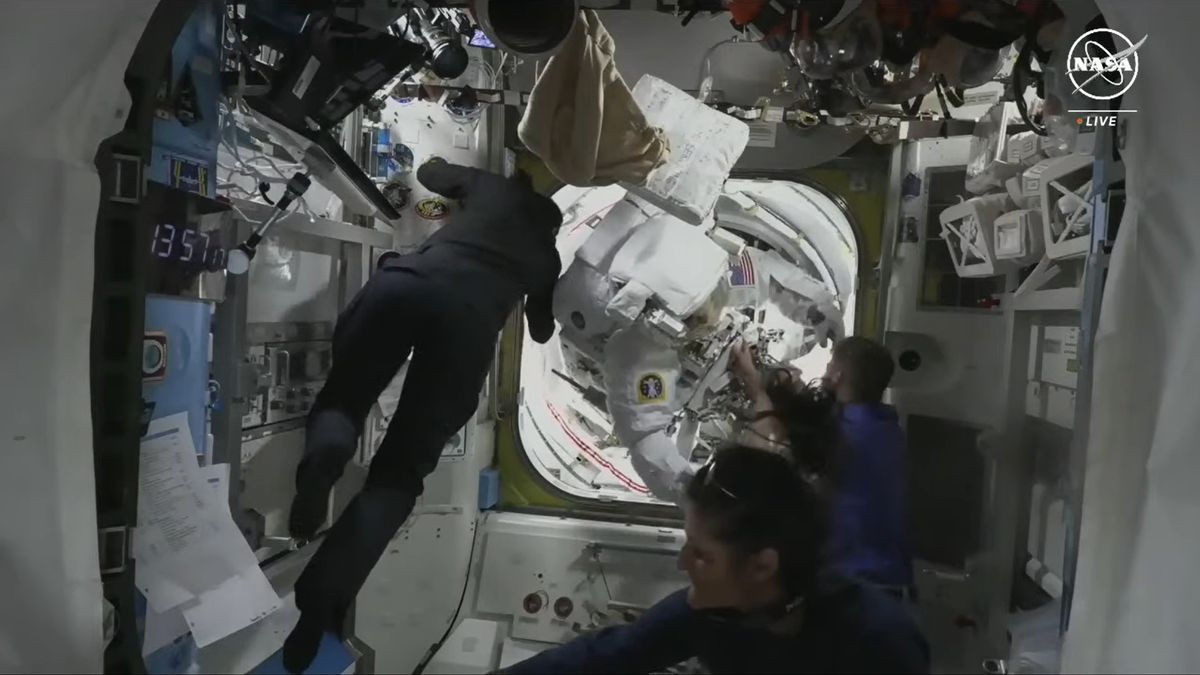We’ll have to wait a while to see NASA astronauts step outside the International Space Station (ISS) again.
NASA had been planning to conduct a two-person spacewalk on July 2, but that excursion has been pushed back until the end of July, agency officials announced this afternoon (June 28).
The delay will give mission teams more time to investigate what happened on the most recent extravehicular activity (EVA), which occurred on Monday (June 24). NASA astronauts Tracy Caldwell Dyson and Mike Barratt were supposed to work outside the ISS for about 6.5 hours, but they had to wrap up after just 31 minutes when Dyson’s spacesuit began leaking water (which is used as a coolant).
Teams on the ground have not yet been able to figure out the root cause of the leak, which occurred not in the suit itself but in an “umbilical,” which is a line that connects to the suit and services it.
“Given that, we’re currently end of July for our next EVA,” Bill Spetch, operations integration manager for NASA’s International Space Station Program, said during a press conference this afternoon.
“So, we want to give the team enough time to go understand what happened on this one and make sure we don’t have to make any changes,” he added.
The upcoming, now-delayed spacewalk will also feature Dyson and Barratt. The duo will make “hardware replacements and installations, preparations for future upgrades on science gear and photographic inspections of station pipelines,” NASA officials wrote in a blog post on Thursday (June 27).
Coolant leaks are a recurring issue for ISS spacewalks. In March 2022, for instance, European Space Agency (ESA) astronaut Matthias Maurer noticed a buildup of water in his helmet after a long EVA, an issue that led to a seven-month spacewalk hiatus. Fellow ESA astronaut Luca Parmitano experienced an even scarier leak in 2013; water began filling his helmet during a spacewalk, forcing him to hustle back inside the ISS.
Today’s press briefing also discussed the status of Boeing’s Starliner spacecraft, which arrived at the ISS on June 6 on its first-ever crewed mission.
Starliner’s orbital stay was originally supposed to last just a week or so, but NASA and Boeing have extended the test mission multiple times to investigate the cause of helium leaks and thruster issues that have cropped up on the spacecraft.
And those investigations continue: Starliner still doesn’t have a target landing date, NASA officials said today.


